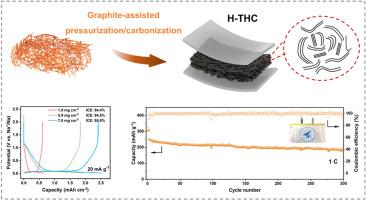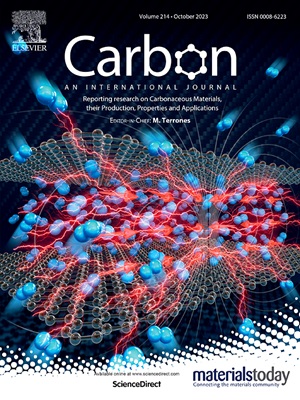Superior initial Coulombic efficiency and areal capacity of hard carbon anode enabled by graphite-assisted carbonization for sodium-ion battery
Abstract
Hard carbons are perceived as promising anode materials in sodium-ion batteries, while their practical implementation is largely impeded by the insufficient initial Coulombic efficiency (ICE). Hard carbons with self-supporting architecture are intriguing to enhance ICE owing to the omission of binder and conductive agent; whereas elaborate architecture and microstructure design are still required to further raise the ICE to the level of commercial graphite in lithium-ion batteries, especially under high areal capacity. Herein, we propose a graphite-assisted pressurization strategy during carbonization to achieve remarkable ICE and high areal capacity in resulting self-supporting cellulose tissue derived hard carbon anode. The intimate contact of graphite plate enables suitable local ordering of pseudo-graphitic nanodomains with low intrinsic defects, responsible for enhanced ICE. While the pressure-reinforced dense yet self-interwoven fibrous networks render high areal capacity. Consequently, the as-prepared self-supporting hard carbon anode displays remarkable ICE to 95% and areal capacity of 2.4 mAh cm−2, far exceeding the reported value of less than 0.8 mAh cm−2. Meanwhile, the rate and durability are not scarified under such superior ICE due to the well-manipulated pseudo-graphitic nanodomains and porous fibrous networks. The practicality is further demonstrated in coin-type and pouch-type full cells delivering high capacity and long-term stability. Our finding offers an impetus for the development of high ICE and areal capacity for sodium-ion battery anode.


 求助内容:
求助内容: 应助结果提醒方式:
应助结果提醒方式:


